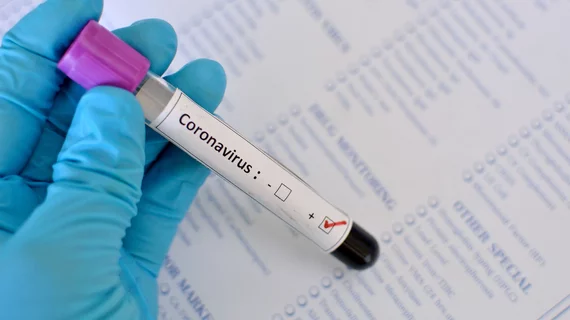Hospital discharge, quarantine process for COVID-19 patients ‘may need to be reevaluated’
There’s been no shortage of research analyzing patients sickened by the coronavirus, but how do radiology departments and hospitals deal with these individuals once they’ve recovered? And when can they be safely discharged?
To understand these questions and better prepare clinicians on the front lines of this epidemic, physicians from a hospital in Wuhan, China detailed how they dealt with medical staff who were exposed to the virus and their hospital’s follow-up process. In light of their experience, the researchers found that their protocol—which relies on strict lab testing and imaging benchmarks—may need a second look.
“Little attention has been paid to the follow-up of recovered patients,” Lan Lan, MD, with Zhongnan Hospital of Wuhan University’s radiology department, and colleagues wrote Feb. 27 in JAMA. They went on to say their experience suggests that “current criteria for hospital discharge or discontinuation of quarantine and continued patient management may need to be reevaluated.”
In their study, Zhongnan and colleagues included one hospitalized patient and three medical personnel who were quarantined at home with COVID-19. The researchers performed real-time reverse transcriptase–polymerase chain reaction (RT-PCR) testing to determine if the patients had recovered and could return to work; families were also tested for the virus. The group had to meet four strict criteria before they were discharged or removed from quarantine, including:
1) A normal temperature lasting longer than three days.
2) Resolved respiratory symptoms.
3) Substantially improved acute exudative lesions on chest CT.
4) Two consecutively negative RT-PCR test results that were at least one day apart.
After undergoing antiviral treatment, three of the four patients’ clinical symptoms and CT abnormalities had dissipated. In the fourth, imaging still showed ground-glass opacities. The entire group also had two consecutive negative lab test results. All were later deemed recovered, ready for discharge and approved to leave quarantine.
After this determination, hospital staff asked them to continue the quarantine protocol at home for five more days. RT-PCR testing performed five to 13 days after this period yielded positive results for each patient. Further analysis showed that all patients were asymptomatic, with chest CTs showing zero changes from their prior normal images.
“These findings suggest that at least a proportion of recovered patients still may be virus carriers,” the authors wrote.
Zhongnan and colleagues admitted that false-negative RT-PCR test results could have occurred, but that the two consecutive negative lab results, combined with chest CT findings, suggested the patients were recovered and safe to discharge.
Importantly, the authors noted their study was limited by its small sample size and mild or moderate degree of infection reported in each patient. But in light of these findings, the Chinese team believes current protocols may need to be reexamined.
“Further studies should follow up patients who are not healthcare professionals and who have more severe infection after hospital discharge or discontinuation of quarantine,” the authors added. “Longitudinal studies on a larger cohort would help to understand the prognosis of the disease.”

